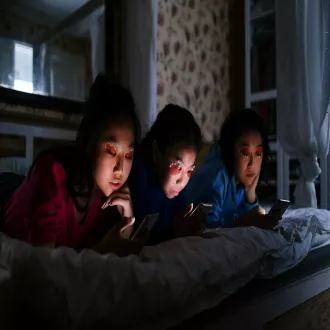Transcription How are emotions created? The drive to act
The Active Nature of Emotion
To begin managing our emotions intelligently, it is essential to banish the idea that they are passive phenomena that simply "happen to us" without our control.
The reality is much more dynamic and empowering. At its most basic level, an emotion is a biological impulse for action.
The very etymology of the word gives us a clue: it comes from the Latin emovere, which translates as "to set in motion" or "to move outward."
Emotions, therefore, are not static states, but active processes designed by evolution to prepare us to respond to the demands of the environment.
They are internal signals that urge us to approach, to withdraw, to fight, to explore, or to connect.
The Ingredients of Emotional Experience. The PALM Model
Our subjective emotional experience does not arise out of nowhere; is built from the interaction of several key components.
A useful model for understanding this construct is what we can call PALM, an acronym for Posture, Attention, Language, and Meaning.
- Posture (and Physiology): Our body and mind are intimately linked. The way we hold our body; our posture, our facial expressions, our breathing rate; all send constant signals to the brain that directly influence how we feel.
A slouched posture and drooping shoulders can induce feelings of sadness, while an upright posture and a smile, even a forced one, can uplift our mood.
- Attention: "Where attention goes, energy flows." What we choose to focus our minds on has immense power to amplify or diminish an emotion.
If we dwell on a negative thought, the associated emotion (anxiety, anger) will grow.
If, on the other hand, we deliberately shift our attention to something positive or neutral, the intensity of the negative emotion will decrease.
- Language: The words we use, both in our self-talk and in our conversations, not only describe our emotional reality, they create it.
Calling a situation "terrible" generates a very different emotional response than calling it "challenging."
- The questions we ask ourselves are also crucial: "Why does this always happen to me?" sinks us into victimhood, while "What can I learn from this?" opens us up to growth.
- Meaning:Perhaps the most powerful component is the meaning or interpretation we attribute to an event.
The same objective event, such as losing a job, can be interpreted as a "catastrophe" or an "opportunity."
This interpretation ultimately determines the emotional response.
By understanding that we are the co-creators of our emotions through these four components, we gain the ability to consciously intervene in the process.
By changing our posture, redirecting our attention, adjusting our language, or reinterpreting meaning, we can actively transform our emotional state.
how emotions are created the drive to act




